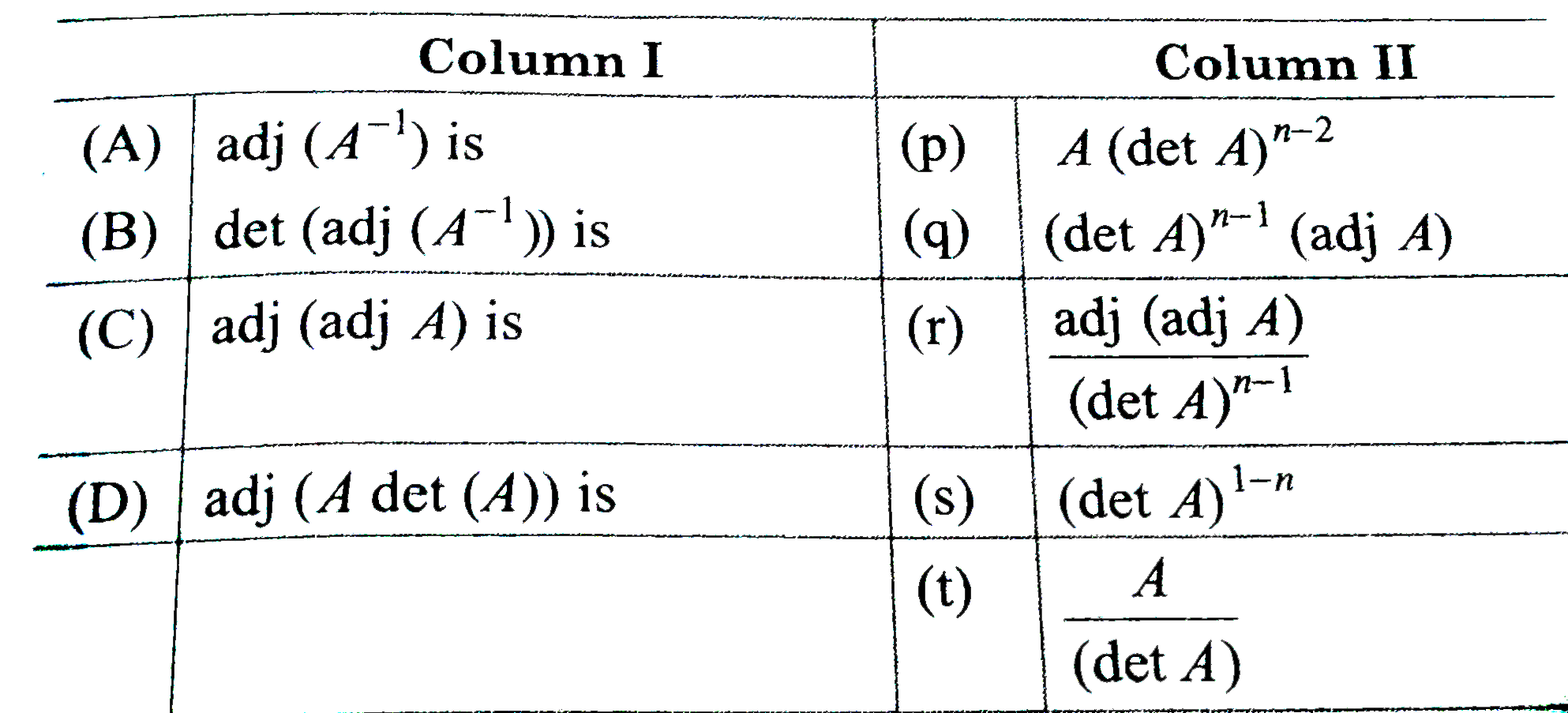Let A be a non - singular symmetric matrix of order 3. If AT=A2−I, then (A−I)−1 is equal to
A
2A
A−I
2A−I
The correct Answer is:A
To solve the problem, we need to find (A−I)−1 given that AT=A2−I for a non-singular symmetric matrix A.
Step 1: Use the given equation
We start with the equation given in the problem:
AT=A2−I
Since A is symmetric, we have AT=A. Therefore, we can rewrite the equation as:
A=A2−I
Step 2: Rearranging the equation
Rearranging the equation gives us:
A2−A−I=0
This is a quadratic equation in terms of the matrix A.
Step 3: Factor the quadratic equation
We can factor the quadratic equation:
A2−A−I=0⟹A2−A=I
This can be rearranged to:
A(A−I)=I
Step 4: Identify the inverse
From the equation A(A−I)=I, we see that A is the inverse of (A−I). Therefore, we can express this as:
(A−I)−1=A
Conclusion
Thus, we have found that:
(A−I)−1=A
We start with the equation given in the problem:
AT=A2−I
Since A is symmetric, we have AT=A. Therefore, we can rewrite the equation as:
A=A2−I
Rearranging the equation gives us:
A2−A−I=0
This is a quadratic equation in terms of the matrix A.
We can factor the quadratic equation:
A2−A−I=0⟹A2−A=I
This can be rearranged to:
A(A−I)=I
From the equation A(A−I)=I, we see that A is the inverse of (A−I). Therefore, we can express this as:
(A−I)−1=A
Thus, we have found that:
(A−I)−1=A
Topper's Solved these Questions
Similar Questions
Knowledge Check
If A is a non-singular matrix of order 3, then ∣∣adjA3∣∣=
A|A|9B|A|12C|A|3D|A|6If A is a non-singular matrix of order n, then A(adjA)=
AABIC|A|InD|A|2InLet A be a non-singular square matrix of order 3×3. Then |adjA| is equal to
A|A|B|A|2C|A|3D3|A|
Let A be a non singular, symmentric matrix of order three such that A=adj(A+AT), then.
View SolutionIf A is non-singular matrix of order, n×n,

View SolutionIf A is non-singular matrix of order 3 ,then the rank of A=
View SolutionIf A is a non singular matrix of order 3 then|adj(A)|=……………
View SolutionLet A and B are two non - singular matrices of order 3 such that A+B=2I and A−1+B−1=3I, then AB is equal to (where, I is the identity matrix of order 3)
View Solution
